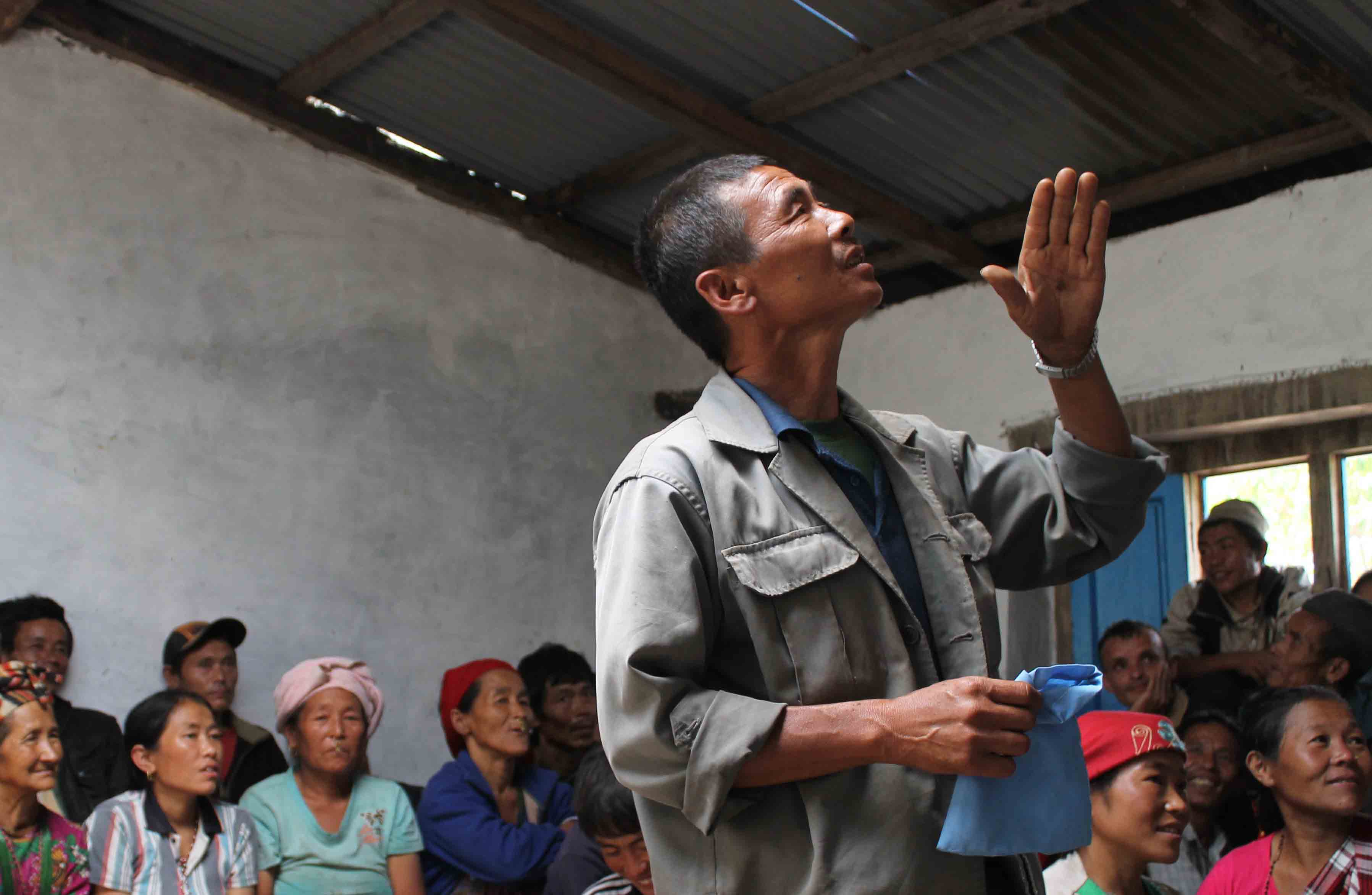
Cows, Conflict, dZi: Update from Nepal
The Awareness into Action series of blog posts originated in 2011 as a way to document ordinary folks attempting to get out there and do good. We began by following a pair of Mountainfilm in Telluride staffers through the setbacks and triumphs of their endeavor to take the inspiration of Mountainfilm and turn it into something tangible in Ghana. Now the series continues as we follow another former Mountainfilm staffer, Lexi Tuddenham, in Kathmandu, Nepal.
After a couple of short field trips and a long break I am back. To reiterate, at last glance I was in Kathmandu, Nepal, trying to figure out why I had chosen to be so far from mountains and so close to sewage. The main reason, and the reason for me being here at all — is the dZi Foundation, a US-based international non-profit that works to improve the lives and prosperity of underserved communities in remote regions of the Himalaya. By working with this organization for 9 months in Nepal, I am hoping to conquer my own skepticism of development and find a new avenue for doing good in the world.
The question is, though, What does dZi actually do? How do you improve the lives of other people? And how can you tell?
In simplest terms: “Working from the belief that local people are the best authorities on how to improve their own lives, dZi aims to provide them with the information, training, and support they need to do just that.”
That means that right from the start dZi only works in new areas when invited by the local community. In these remote areas, this often involves multiple drafts of letters painstakingly hand written, rewritten (not a lot of WhiteoutTM out here), signed by community members and then carefully delivered by several day’s walk to our nearest field staff.
It means that once there dZi doesn’t sit them down and tell them what we see as their problems (“You don’t have _______(Toilets! Healthcare! Schools! Solar stoves! Laptops! Etc.)). Instead, in initial meetings with communities, dZi asks them to tell us what their strengths are, what their priorities are, and where they want to be in five years, in ten years.
This approach was initially conceived as the Revitalize a Village (RAV) program and has been at the core of what dZi has done over the past five years. A lot of it is about choice — the decision a community makes that it wants to change at all, the ability to see more than one option and the freedom to make an informed, deliberate choice about its own future.
Why is this important? Because in a poor, post-conflict country like Nepal, people on the fringes typically don’t have a lot of choices. The country as a whole is still recovering from a 10-year civil war, stuck between ethnic, historical, political and social impasses as the entire constitutional process so necessary to being a functional democracy founders. The newspapers report regularly on stories as pressing as Hugh Grant’s latest misbegotten child and widows who killed themselves when they couldn’t pay to feed their own children.
Encircled by its own paradoxes, it’s a place caught against itself — gay marriage is legal, but husbands and wives hardly even touch in public; the Himalayas are one of the most spectacular mountain ranges in the world, the source of glacier-fed water for a large chunk of the world’s population, but less than 100 miles from its source, the Bhagmati River runs completely black, stinking and tarry. There are war criminals in the government. More than 20 percent of the population is abroad, working 18-hour days to pay off enough debt that they can come home again and have a little left over to pay for some presents to bring back.
Public health issues abound, as do social injustices associated with gender, caste and wrenching poverty. With this many obvious problems around it’s far too easy in this situation to step in and start diagnosing and prescribing without actually asking people what their priorities are or what they want. In part this is because they are looking for answers, for help, for solutions. But coming in to “fix things” for the one to five years that represent a typical donor’s grant cycle too often just creates more dependency and a belief that they can’t change things without outside help.
So we work through locally formed NGO partners who implement our programs and eventually take on the sometimes-rocky process of guiding a community toward sustainable development. Together with the local NGO, we help the community organize itself into community development groups who then are the primary units for making choices, visioning goals and turning them into reality. These community groups work together with the NGOs and with us to propose and implement successively larger projects that get them where they want to go. The first project they do is a small, day-long one that costs nothing; the next one applies for $500 in seed funds from dZi; the next one is a for a much larger project grant that has to be selected by a competitive process from all our communities, and so on and so forth, building at each stage on what has been already been done, learning from the successes and failures of each project and providing whatever extra skills and training the community needs to take on the next one.
It’s not easily encapsulated, or even easily communicated (witness the length of this post), but it’s what we do.


